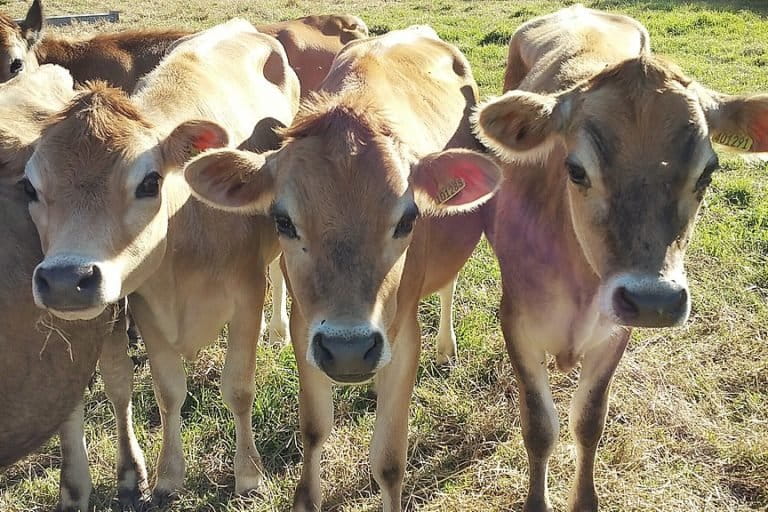- India has largest livestock numbers in world and climate change is expected to adversely affect the milk production and reproductive function of cattle and buffaloes in the country.
- Indian indigenous cattle possesses climate resilient traits and the government of India is considering using those traits to develop breeds that can withstand high temperature in the face of climate change.
- Experts point out that the government has woken up late as it has been stressed by experts from years that India’s indigenous cattle are much better than the exotics or crossbred ones.
With climate change expected to adversely affect the milk production and reproductive function of cattle and buffaloes in the country, India is now considering using climate resilient traits of its indigenous cattle breeds to develop new breeds that can withstand rising temperatures.
In a report presented in the Parliament in August 2017, the Parliamentary Standing Committee on Agriculture led by Bharatiya Janata Party (BJP) leader Hukmdev Narayan Yadav, had said that “milk production and reproductive function of cattle and buffaloes will be adversely affected by projected temperature rise of 2 to 6 degree Celsius over existing temperature during the period 2070-2099.”
The report had also noted that studies indicated that warming will negatively impact the productivity of indigenous cows and productivity loss will be about 0.33 million tons. It had observed that decline in milk production will be higher in crossbreds followed by buffaloes and indigenous cattle.
The panel had recommended to the central Government to start a comprehensive plan for making an inventory of all indigenous varieties of cattle in country, identification and separation of their specific traits, proper breeding plan for cross breeding of indigenous varieties of cattle, vaccination so that farmers of our country are equipped with wherewithal for coping with vagaries associated with climate changes in the country.
In the endeavour to improve the indigenous varieties of cattle, the committee had also asked the government to associate with organisations, dairy industries and farmers associations working in the area of cattle breed improvement. Now in August 2018, a year since the report, the parliamentary committee has come out with another report noting the actions taken or promised by the central government on the recommendations made in the August 2017 report.
“Biochemical, morphological and physiological characterization of indigenous cattle breeds were carried out and compared with exotic breeds. The traits identified in indigenous breed – heat shock proteins, air coat colour, wooly hair – that impart tolerance to heat stress could be used in future animal breeding programs to develop breeds that can withstand high temperature,” the central government told the parliamentary panel.

The government, in its reply to the committee, also stressed that the study undertaken by National Bureau of Animal Genetic Resources (NBAGR) Karnal revealed that indigenous cattle breeds/population found in different parts of India possess better heat tolerance and disease resistance as compared to exotic cattle breeds and their crosses.
“Since productivity of indigenous cattle is lower than exotic/crossbred cattle, the indigenous cattle are facing stiffer competition with exotic/crossbred cattle. Therefore, it is essentially needed to take up genetic improvement program for our indigenous cattle population which is nearly 80% of the total cattle of India,” the government said.
It emphasised that “work has also been initiated to study climate resilience strength of indigenous cattle breeds”.
“Laboratory experiments have revealed that Sahiwal cows have superior tolerance to summer stress as been shown by hematological, cell proliferation, heat shock proteins and stress marker data,” it added.
The move is significant as India has the largest livestock numbers in the world and is also the largest milk producer in the world.
As per the 2012 livestock census, the total livestock population consisting of cattle, buffalo, sheep, goat, pig, horses and ponies, mules, donkeys, camels, mithun and yak in the country is 512.05 million. Of those, 299.6 million are cattle and buffaloes. Of the 190.9 million cattle in the country, the number of indigenous cattle is 151.1 million.
Devinder Sharma, an agriculture policy expert, emphasised, “It’s better late than never. Experts have been saying this for years that the indigenous cattle are much better than the foreign ones. But no one took note of it. We ignored our cattle while a country like Brazil took indigenous Indian cattle breed, improved their productivity and is now the biggest exporter of Indian cattle. It’s high time we start appreciating our own native cattle.”

Meanwhile, in its reply to the committee, the government explained that different feed supplements have been identified and tested successfully to withstand heat stress in cattle.
“Studies on pilled feeding in cattle showed that they help lowering stress levels and methane emission. Custom designed shelters system and feed supplementation with chromium propionate, mineral supplements both in feed and fodder significantly improved the ability to withstand heat stress,” said the government.
The committee was told that many of these climate resilient technologies like feed supplement, shelter management, improved breeds, silage making have been demonstrated in the farmer’s fields in the 121 climatically vulnerable districts across the country.
The report also emphasised that the “up-scaling of these technologies” would enable the livestock farmers in India to cope with “vagaries associated with climate change.”
Banner image – Sahiwal cows – an indigenous breed. Photo by Harvinder Chandigarh/Wikimedia Commons.
